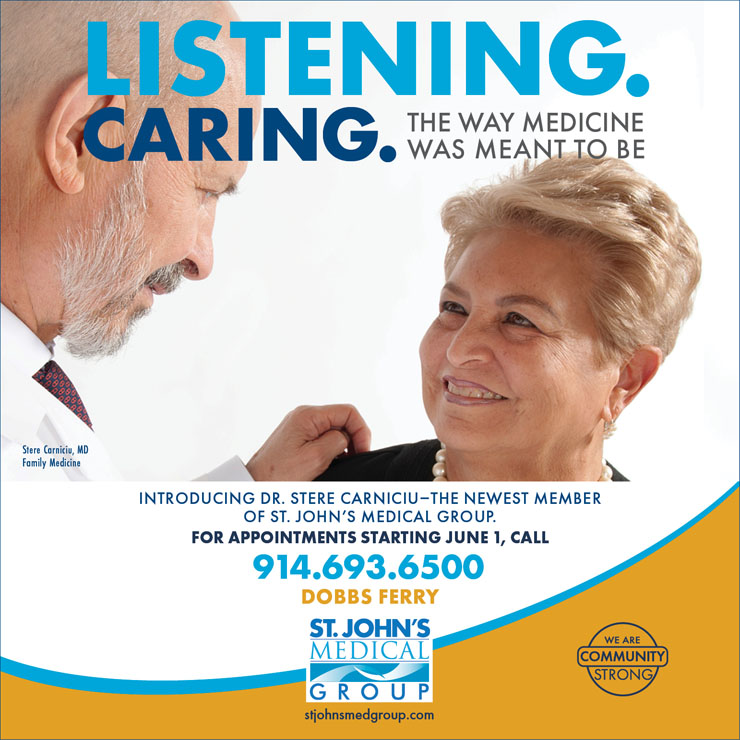
By Barrett Seaman–
An array of doctors, administrators, board members and executives from Northwell Health gathered Monday at Phelps Hospital in Sleepy Hollow for a ribbon-cutting to mark the opening of a new Center for Advanced Procedures, or CAP. As amorphous-sounding as its name may be, the CAP is a highly specific, highly technical facility that takes the treatment of strokes, aneurisms and vascular malformations in the brain and spinal column to a level unexpected in a community hospital.
As Daniel Sciubba, chair of neurosurgery at Northwell put it, “If something happens to your brain, you want two things: you want excellent care and you want it immediately.” Phelps’ CAP aims to do just that.
Strategically situated adjacent to the Phelps Emergency Room on the hospital’s lower level, the Center is comprised of four surgical bays, a waiting room for family members and offices. At its core is an operating theater housing a state-of-the-art biplane scanner, a one-and-a-half ton robot-like device that is capable of creating three-dimensional images of a patient’s brain and vascular system in real time. It assists surgeons in performing minimally invasive procedures such as removing a clot from the brain or re-channeling blood from an aneurism.
Phelps is already accredited to perform minimally-invasive thrombectomies in which tiny catheters are inserted, usually through the groin, and run up into the brain where miniscule tools snip out a stroke-causing clot (see: https://thehudsonindependent.com/phelps-state-of-the-art-stroke-center-saves-time-and-thus-lives/). What the CAP does is bring all the elements of stroke treatment into one place that includes three-dimensional imaging.
“This is the only place in this area that the U.S. Government has felt is advanced thrombectomy-capable,” said Ramandeep Sahni, Phelps’ director of neurology and stroke, a place “where you can come here and have a stroke taken care of immediately and at a very high level.”
As Dr. Sahni observed, stroke is the leading cause of disability in the United States. “Every 40 seconds, someone in this country has a stroke.”
A patient diagnosed as having had a stroke can be processed, examined, operated on and in recovery within five hours, says Kelly Simmons, a nurse assigned to the CAP who has been schooled at the Cary, North Carolina technical training center of Siemens Healthineers, the company that built the biplane imaging machine. Phelps is anticipating that some 290 patients will come through the CAP over the next year—and 2,000 in a five-year period. The first patient was scheduled for the afternoon following the ribbon-cutting.
Read or leave a comment on this story... Print
Print




























